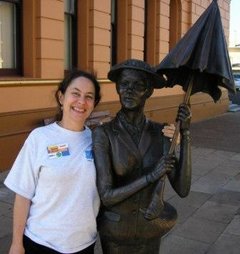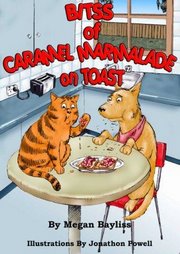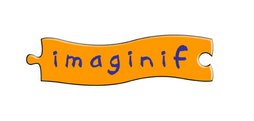 Books can provide protective ideas and guidance to children. When the reading of a book combines with a follow up activity based in the books message, it becomes bibliotherapy.
Books can provide protective ideas and guidance to children. When the reading of a book combines with a follow up activity based in the books message, it becomes bibliotherapy.Self-help books, with structured steps for life improvement, are a form of adult bibliotherapy. However, quality junior fiction is just as effective for children in offering a range of problem solving options. The advice contained within children's literature though, is only as good as the parental help in follow up activities toward integration of whatever the child’s need is.
Children learn through play. Reading is play and a preferred indoor play option for many families. The initial play and problem solving value of reading occurs as children engage with the book's characters. Connected with the story, the child enters an imaginary space of interactive problem solving. Aided by the struggles and achievements of the characters, children learn the social rules of behavior and develop different ways of being able to seek help or reflecting on life issues. If provided with real life opportunities to test literature-induced problem solving, the child is active in their own therapy and the book becomes a good tool for providing advice.
There are three purposes of using children's books as therapy:
1. Identification of character and social situation: This identification increases the probability of learning different behaviors and receiving advice.
2. Catharsis: Through identification, an emotional connection with the character or social situation allows children to act out and discuss their emotional responses to the situation.
3. Insight: Through beneficial discussion and follow-up play, the child integrates the link between the story and their own life, with opportunities to practice how to address and solve issues of concern.
With these purposes in mind, the following nine steps will turn any children's book into affordable therapy.
Step 1) Identify the practical advice (the message) you want your child to know.
Step 2) Match the message with an appropriate book. Seek out junior fiction/non-fiction that deals with the particular issue (drugs, death, alcoholism, fear, bullying, protective behaviour, etc). While searching for the advice appropriate book, remember that:
The book should match your child's reading ability level,
The text must be at an interest level appropriate to the maturity of the youngster,
The theme of the book should match the identified needs,
The characters should be believable so that the child can identify with with the dilemma,
The plot of the story should be realistic and involve creativity in problem solving.
Step 3) Decide on the setting and time for the story reading. Will you read it with/to your child, will you leave the book for your child to find, will you suggest the book to your child as a great read and hope they ask you to buy it for them?
Step 4) Knowing that you need to be active for bibliotherapy to be effective, motivate your child to become involved with an associated problem solving follow up activity by making play suggestions prior to story end (e.g. "On the weekend we could have a Yell free day and instead mime out our angry feelings.")
Step 5) Based on your child’s reaction to your motivating suggestions, design one or more end-of-book-connected activities. This may be as simple as being available for discussion after story end, engaging with your child in drawing a picture from the story, or helping your child journal their thoughts on the book. More exciting: actively encourage dramatic play or drama around the learning issue, or visit a place connected to the story.
Step 6) Pre engage in the follow up activities by asking questions or having short discussions throughout the reading. At the end of a chapter or every few pages, sum up so that "the message" does not get lost in the fantasy.
Step 7) Straight after story end, take a break and allow your child to do their own reflection on the material.
Step 8) Introduce the follow-up activities by briefly retelling the story, focusing on how the characters solved their issue, and let the child know what you could both do to honor the advice/message in the book.
Step 9) Assist your child to integrate the advice gained by honestly answering any questions they may have.
Children’s story books, followed by a well thought out activity makes for cheap therapy: BIBLIOTHERAPY




No comments:
Post a Comment